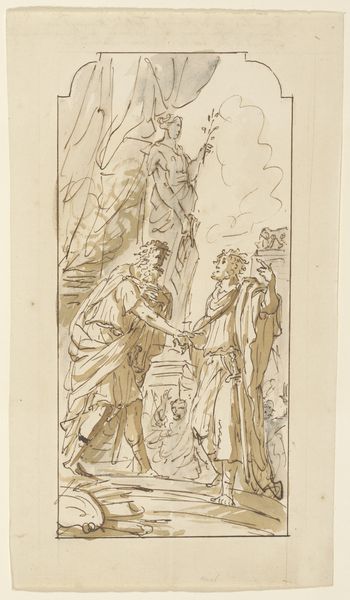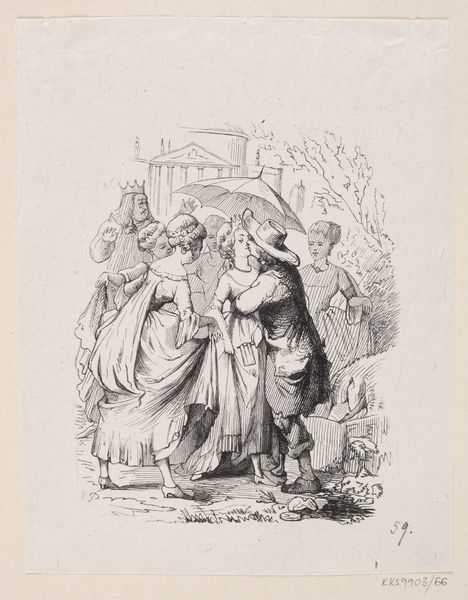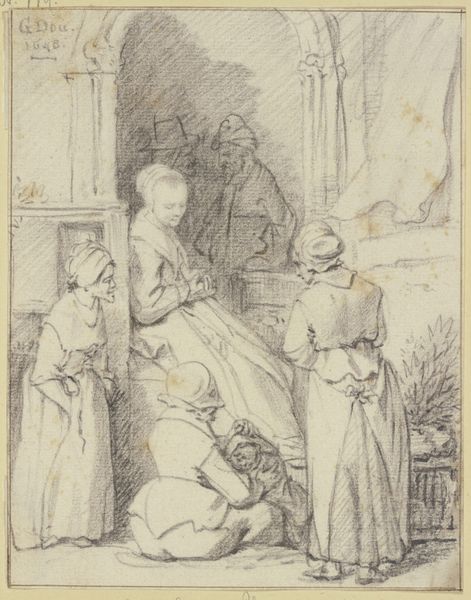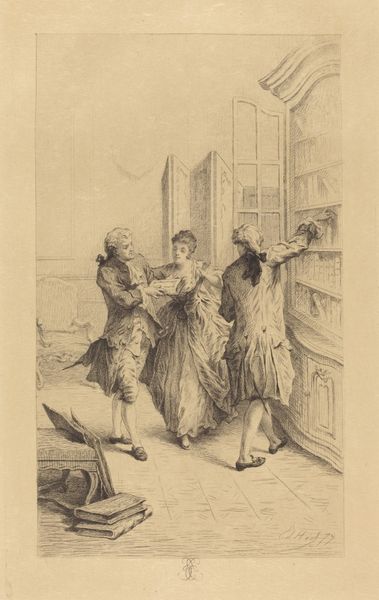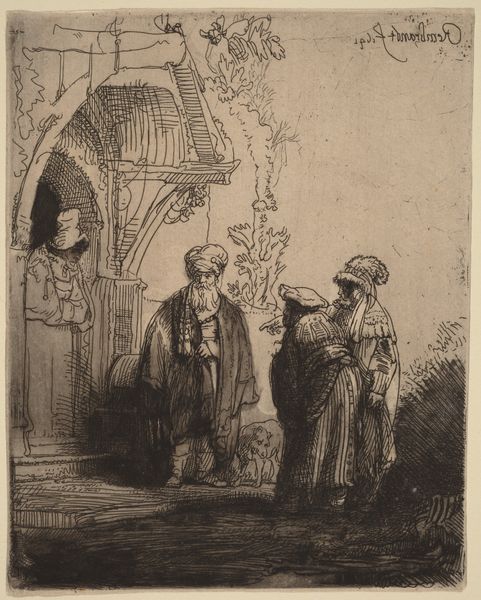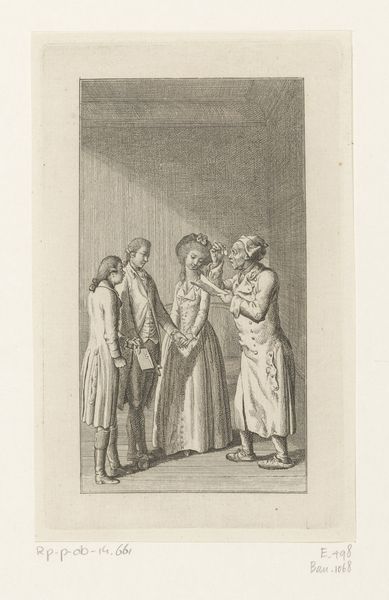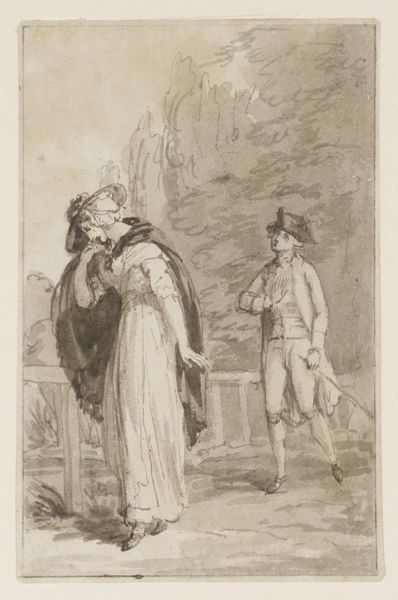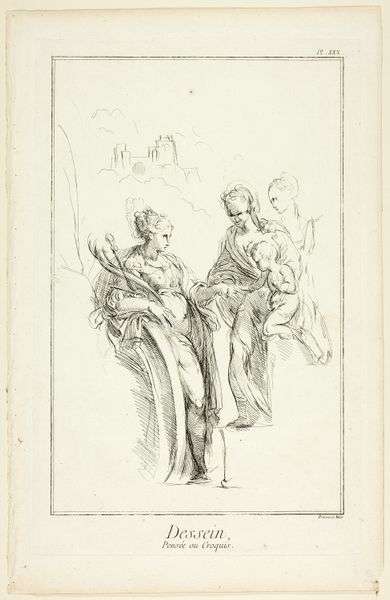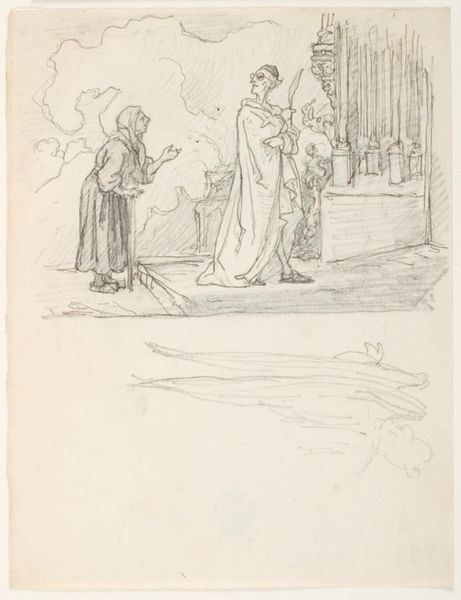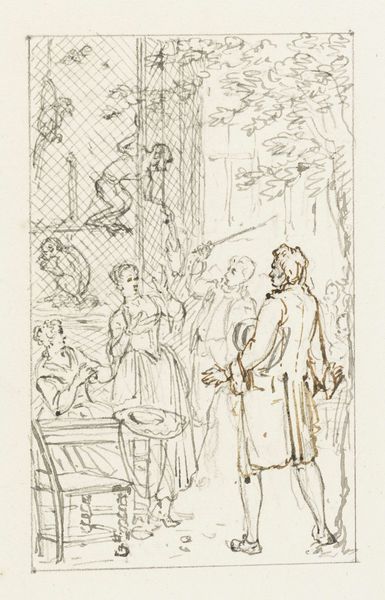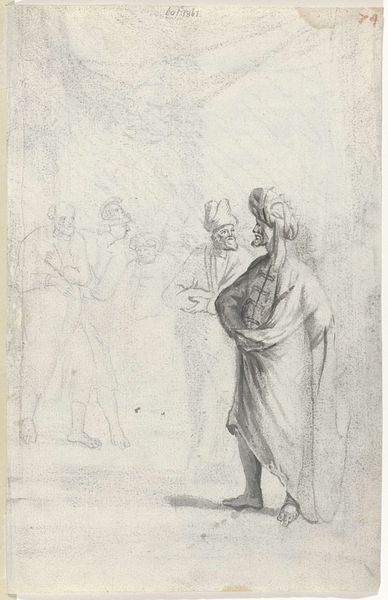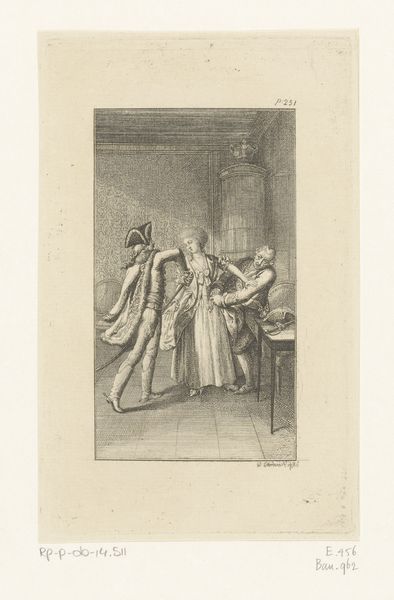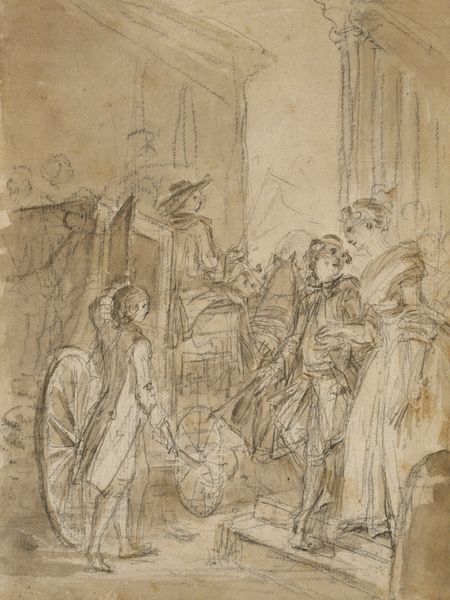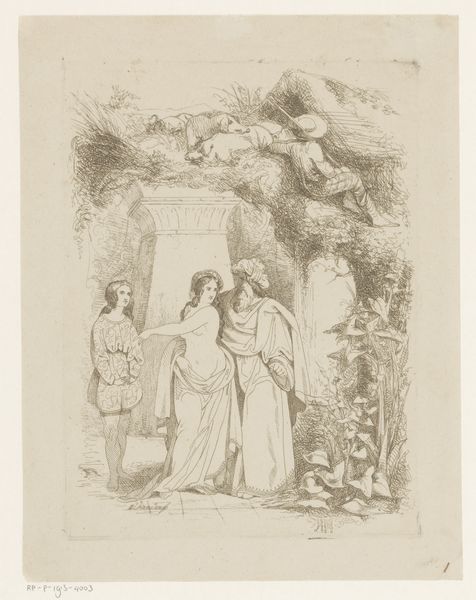
drawing, paper, ink, pencil, chalk
#
portrait
#
drawing
#
neoclacissism
#
figuration
#
paper
#
ink
#
pencil
#
chalk
#
line
#
genre-painting
#
academic-art
Dimensions: 142 × 100 mm
Copyright: Public Domain
Curator: This is an untitled study by William Hamilton, a British artist associated with the Neoclassical movement. The drawing, executed in pencil, ink, and chalk on paper, presents a scene with three figures in what appears to be a classical setting. It’s currently part of the collection here at the Art Institute of Chicago. Editor: My immediate response is its subdued tone. The limited use of gray washes gives it a sense of lightness, almost as if we’re witnessing a half-formed memory. Look at the expressive use of line, though. Notice how the composition uses the vertical lines to guide the eyes, while creating the space and the distance. Curator: Exactly. The architectural backdrop—the arch and columns—places the scene in a Greco-Roman context, very characteristic of the Neoclassical embrace of antiquity. The figures, their draped garments, their poses and expressions—are all evocative of classical narratives, particularly the emphasis on moral lessons. Editor: The draping fabric definitely enhances the tension, while also delineating shapes and emphasizing the overall dynamism. The negative space becomes equally important; see the ambiguous cloud-like form above the curly-haired figure at right. Curator: I see the scholarhip debating exactly what narrative Hamilton depicts in his studies. It might be useful to interpret it within the social context of the time, thinking about how such works perpetuated certain idealized notions of gender roles or moral rectitude for the growing middle class audience of the period. Editor: And perhaps to add to that tension, the drawing is very minimal; there are the unfinished sections on the drapery of the younger woman and other forms on the ground plane to the lower right. Curator: Agreed. I find the sketch-like quality compelling. It offers us a glimpse into the artist's process. And if we consider the art market's increased demands of narrative painting, particularly history painting, in late 18th-century Britain, it reveals the market conditions and public taste. Editor: Indeed, while history provides the why, formal analysis lets us engage in the how. And in this piece, it is difficult to reconcile these forces into an either/or proposition. Curator: A fruitful way to end. There is space for each approach, and how wonderful to view them side by side.
Comments
No comments
Be the first to comment and join the conversation on the ultimate creative platform.
